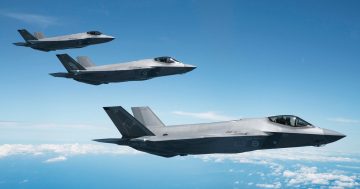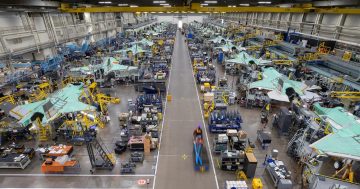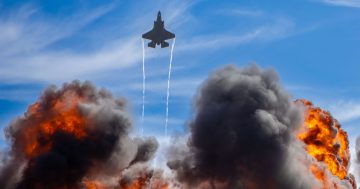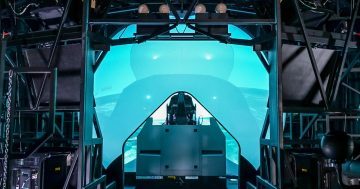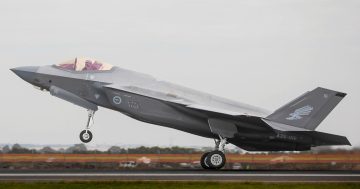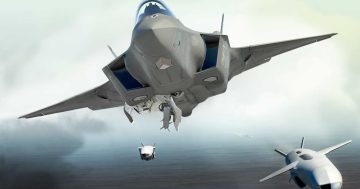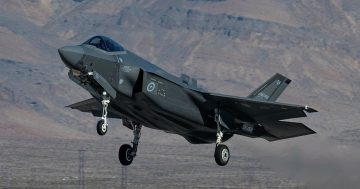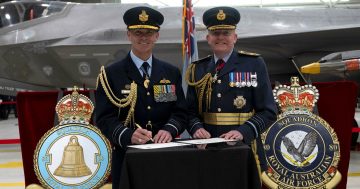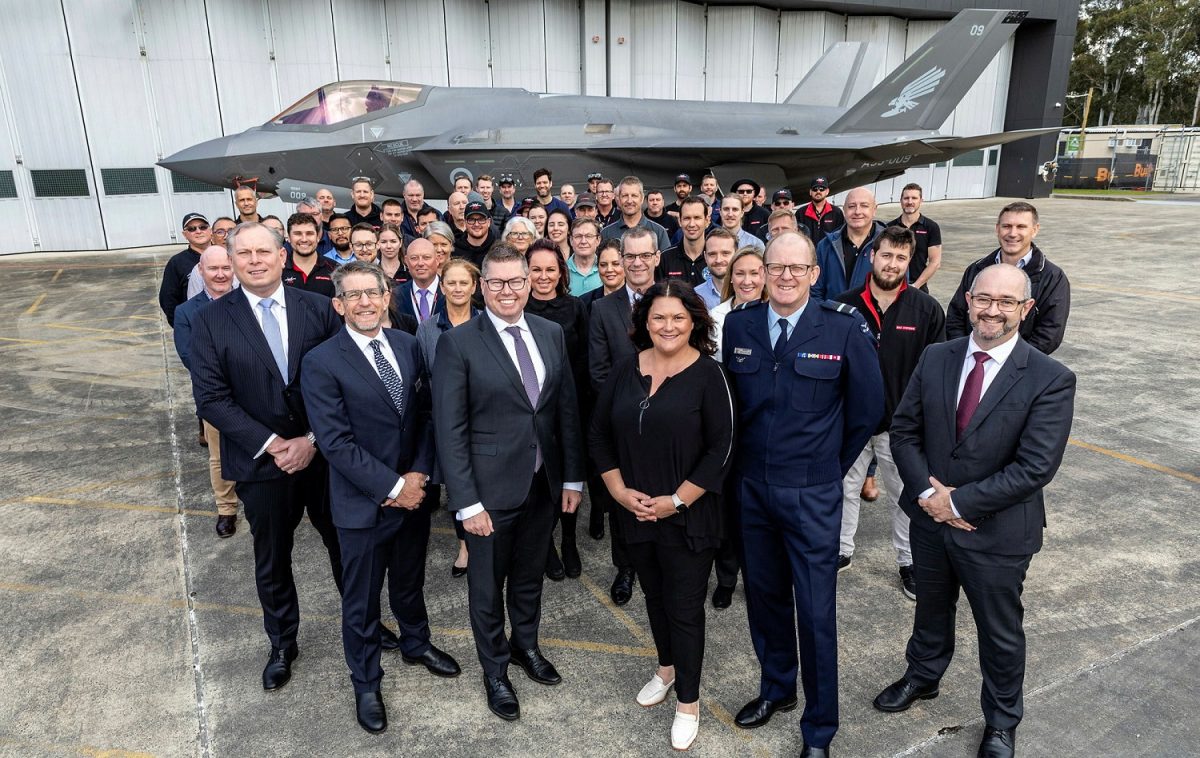
Defence Industry Minister Pat Conroy, BAE Systems Australia managing director Ben Hudson, and BAE Systems and RAAF staff at the coating facility announcement. Photo: ADF.
The Federal Government has committed $100 million to develop a new stealth aircraft coating facility to be built at Newcastle Airport in NSW.
The facility will be used to repaint and re-apply the low observable coatings used by the Royal Australian Air Force’s Lockheed Martin F-35A Lightning fighter aircraft fleet. The RAAF currently has 63 F-35As in service and is expecting delivery of a further nine aircraft in the next few months.
Australia was selected by the US Joint Strike Fighter Program Office (JPO) as a regional maintenance, repair, overhaul and upgrade (MRO&U) hub for F-35 sustainment. The facility will be available to operators of the F-35 based in the Indo-Pacific region, including Japan, South Korea, the US and, from 2025, Singapore.
Newcastle Airport shares its runway with RAAF Base Williamtown where three of the RAAF’s four Lockheed Martin F-35A squadrons are based.
The coating facility will be established in partnership with BAE Systems Australia, the main Australian industry sustainment and maintenance provider to the RAAF’s F-35 fleet. It will be located at BAE Systems’ growing facility on the airport side of the base. Construction is expected to start next year.
The “recipe” of the F-35’s paint is a closely held secret. So secret in fact that, when a US Navy F-35C was lost over the side of a US aircraft carrier last year in the South China Sea, and when a British F-35 crashed on take-off from a Royal Navy carrier in 2021 in the Mediterranean, no effort was spared in quickly recovering the wreckage of both jets lest it fall into the wrong hands where it could potentially be reverse-engineered.
Several different types of coatings are applied to the F-35 in different areas to reduce its visibility to radar and its infra-red signature. The aircraft’s paint has a special formulation that absorbs radar waves, while key areas such as the wing and tail leading edges, radome, engine intakes, sensors and other apertures, and weapons bay door edges have additional treatments to further reduce the aircraft’s radar cross-section and heat signature.
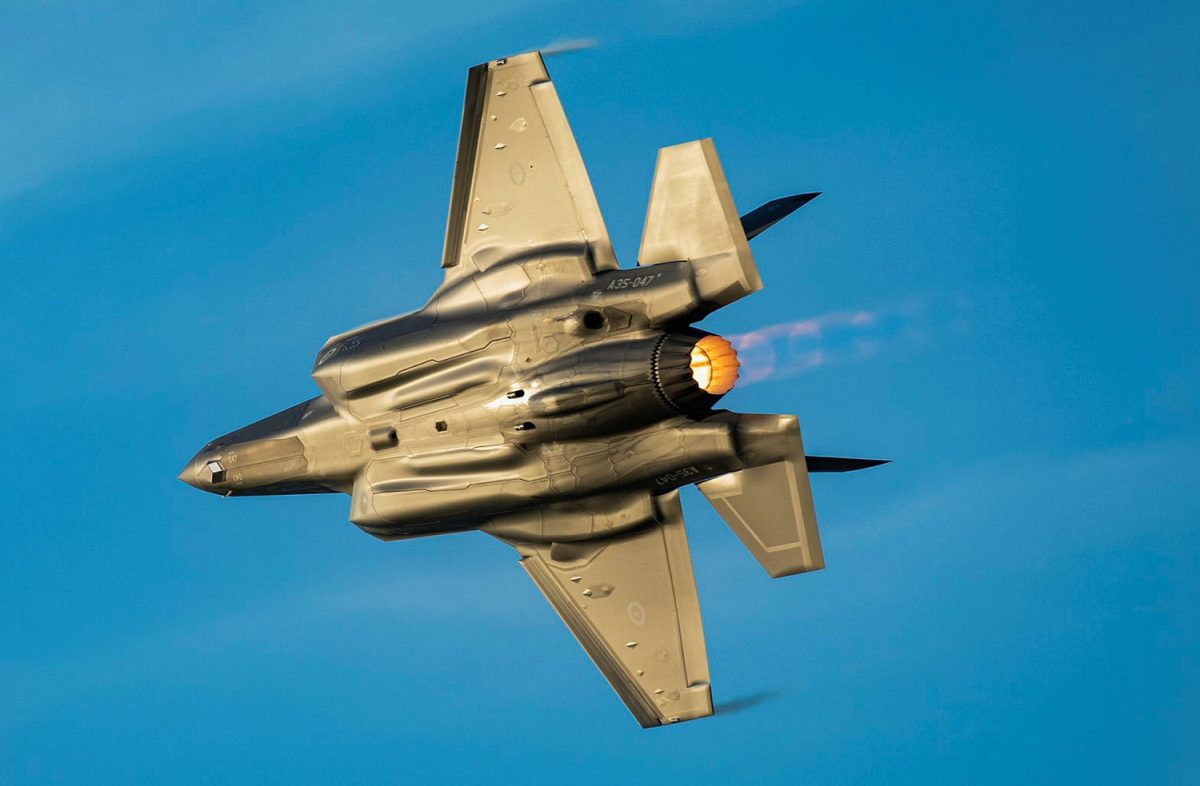
The F-35 has a smooth and blended underside. Note the two small detachable Luneburg lenses at the fuselage mid-point which amplify and disguise the aircraft’s true radar signature. Photo: ADF.
The F-35 has other attributes which make it stealthy. While it can still be clearly seen with the naked eye, in the electro-magnetic spectrum it is several orders of magnitude smaller than previous generations of combat aircraft such as the F/A-18A Hornet it replaced in RAAF service.
When viewed in plan, the F-35’s wing and tail leading and trailing edges are almost all aligned or parallel, panel and door edges have jagged or serrated edges which absorb radar waves, antennas are embedded in the fuselage or wings, the engine intake ducts curve in a serpentine shape before the air gets to the engine, and the underside of the aircraft is smooth and carefully shaped.
The jet also has extremely high manufacturing tolerances built in around doors and panel joins, the panel latches and fasteners are flush, the cockpit canopy has a thin layer of gold between its two layers of perspex to reduce emissions and reflections, and it has internal weapons bays capable of carrying two bombs and six air-to-air missiles.
In the event a threat does see or gets within missile range of an F-35, it has a very capable electronic warfare system which can disrupt enemy radars, sensors around the aircraft that can detect an aircraft or incoming missile’s heat plume, flares designed to distract an infra-red missile’s seeker, and a towed decoy that can distract a radar-guided missile.
When flying in most peacetime training and in commercial airspace, the F-35A can be fitted with two or four Luneburg lenses – radar reflectors designed to amplify the aircraft’s signature, but to also disguise its true signature.
The F-35 is currently the only aircraft in RAAF service that can be categorised as stealthy, or very low observable (VLO). Other aircraft such as the F/A-18F Super Hornet and EA-18G Growler have some low observable coatings and shaping in key areas, but are otherwise conventional designs.
Original Article published by Andrew McLaughlin on Riotact.


